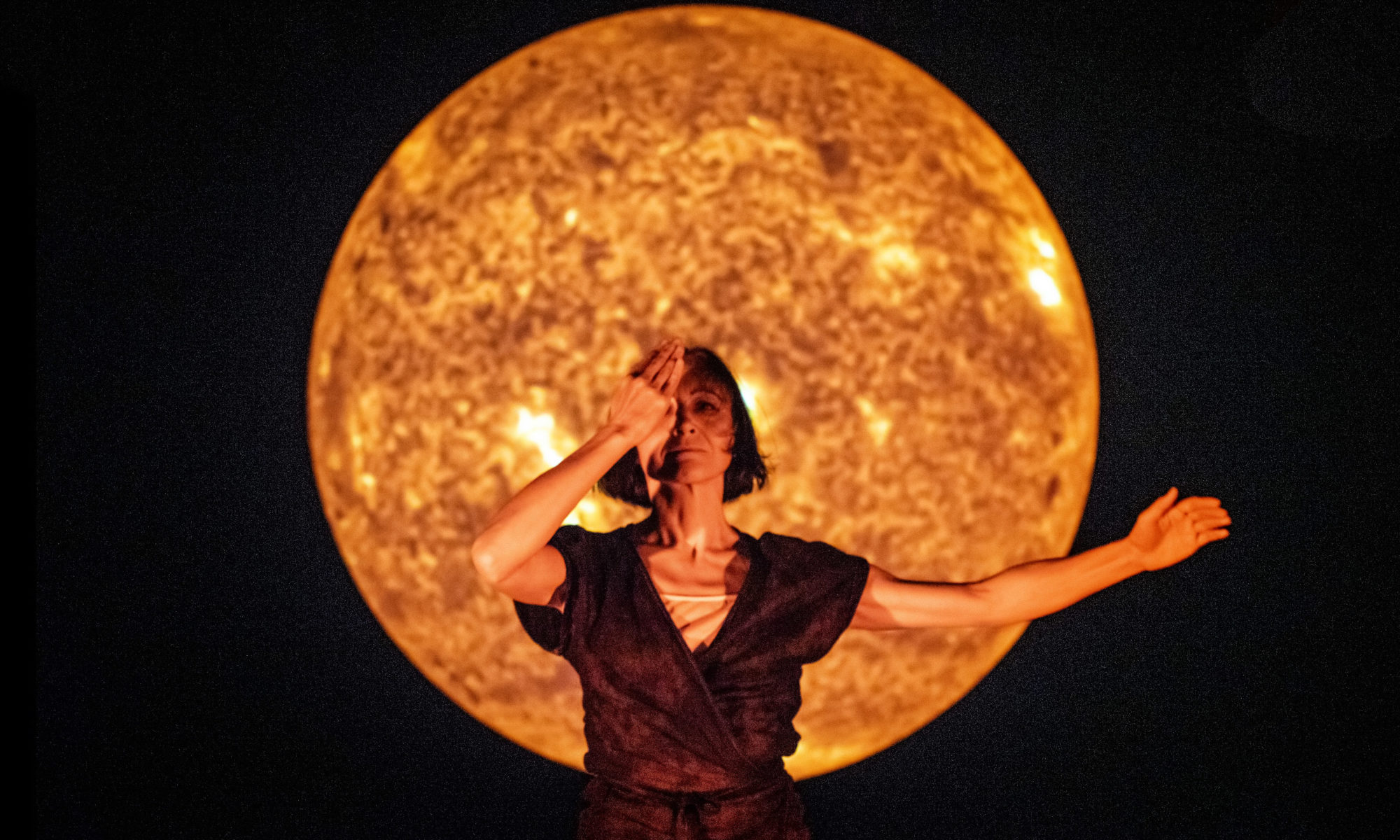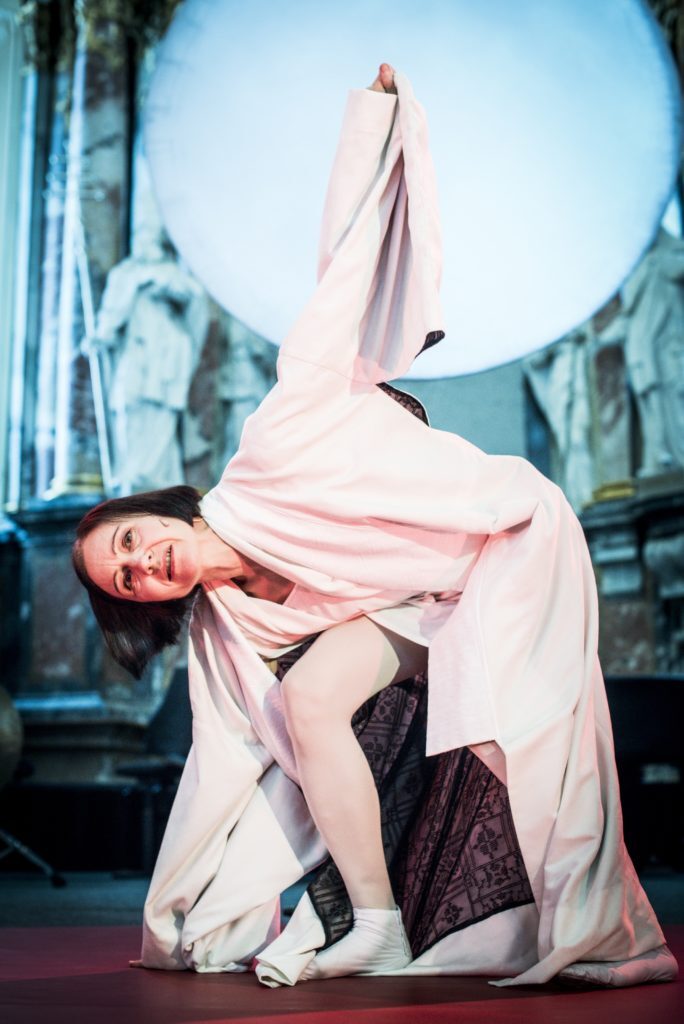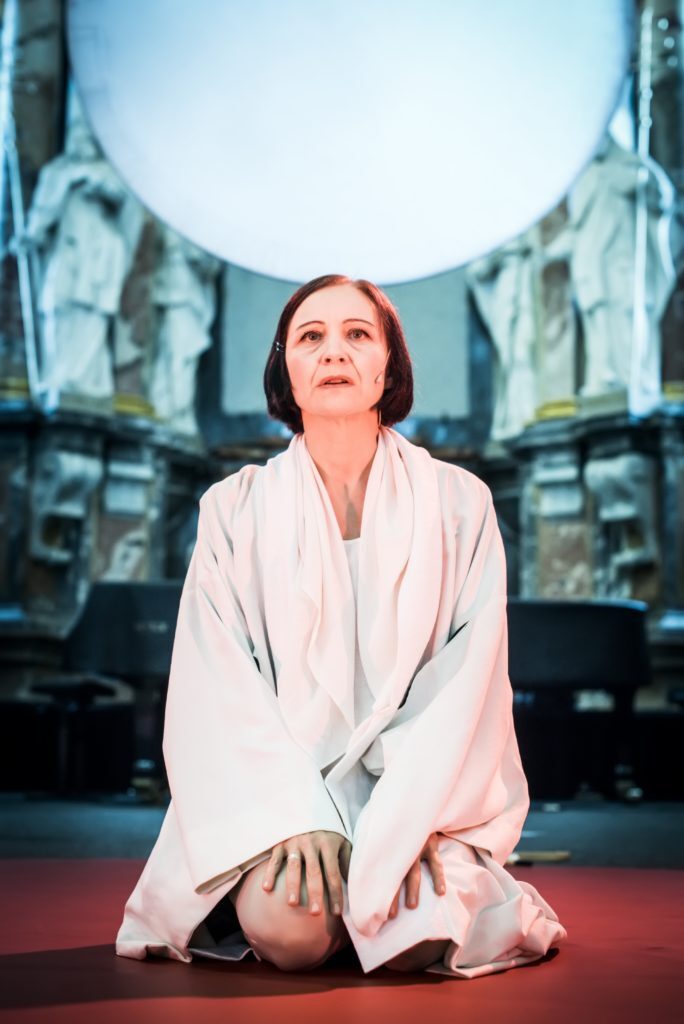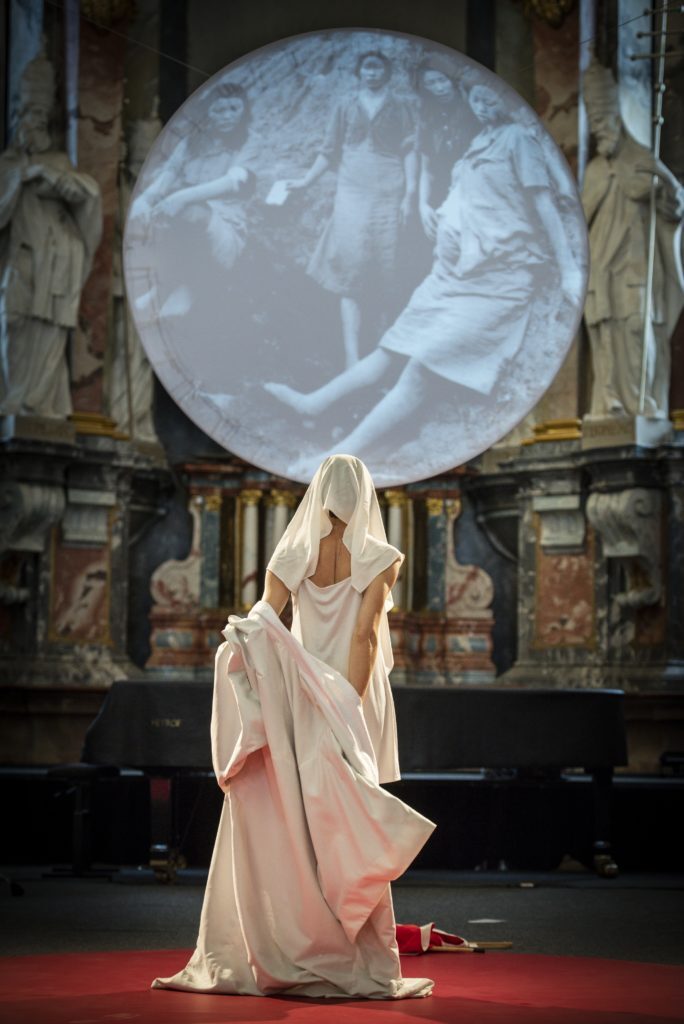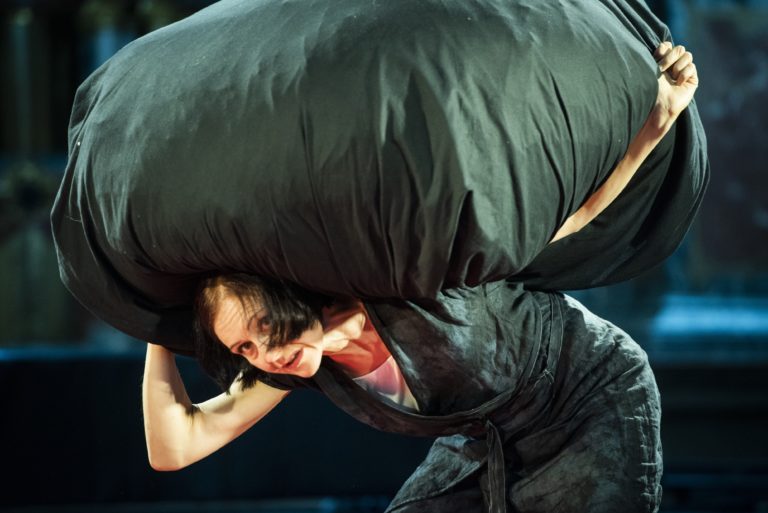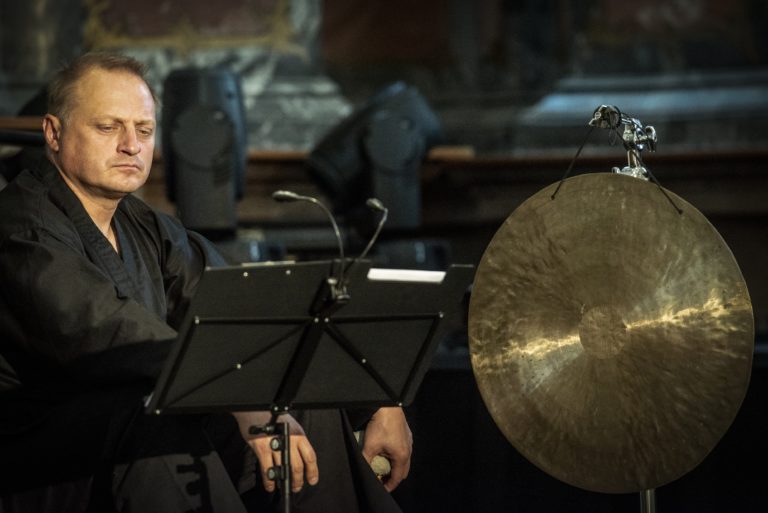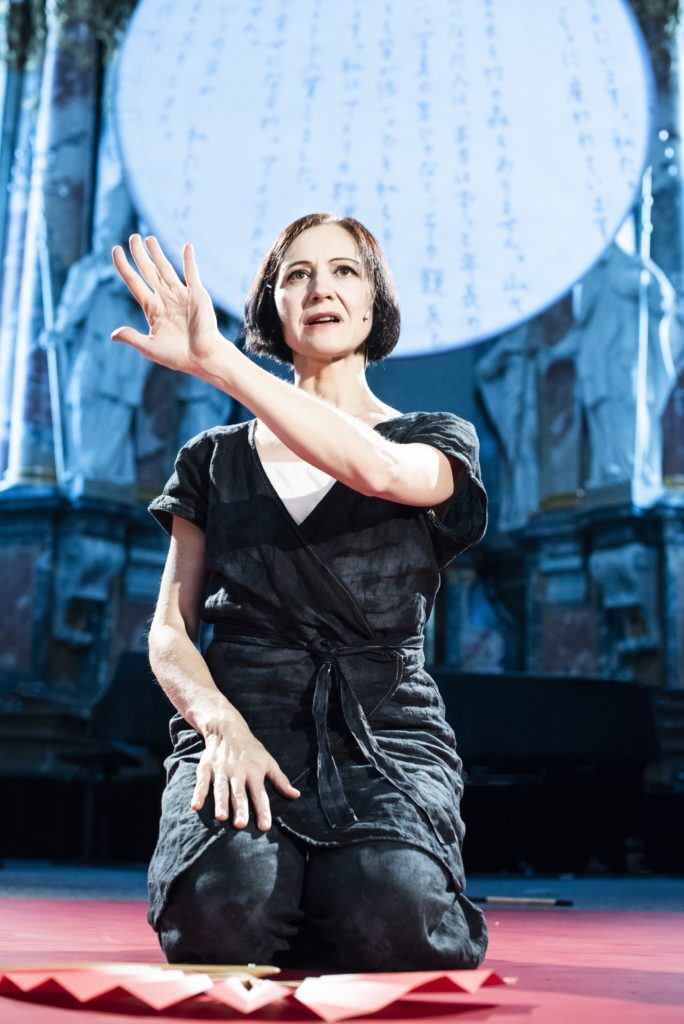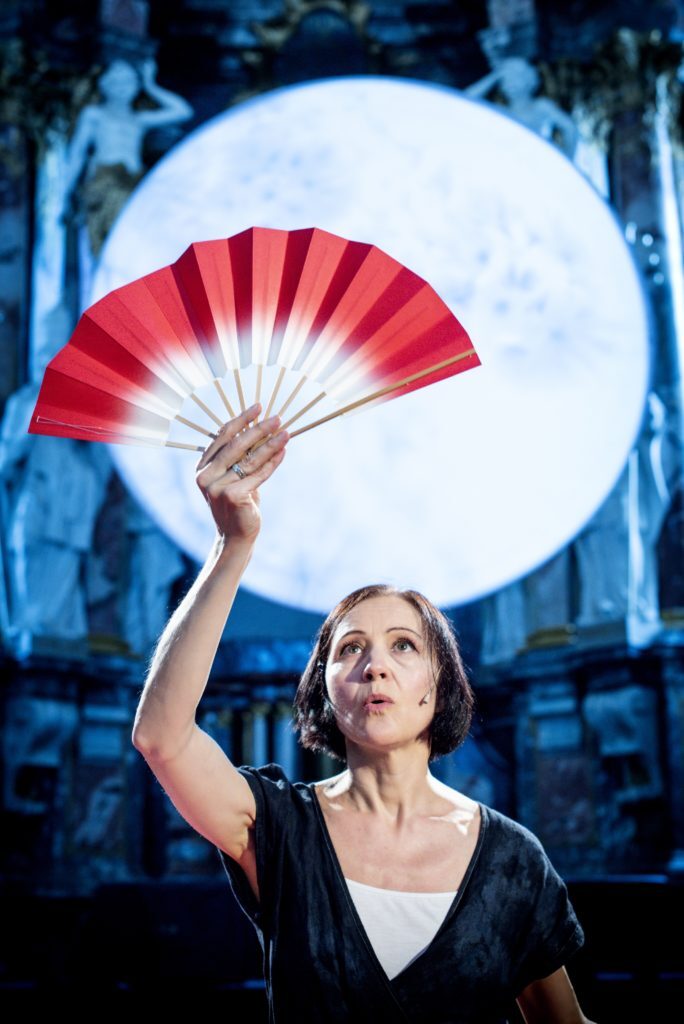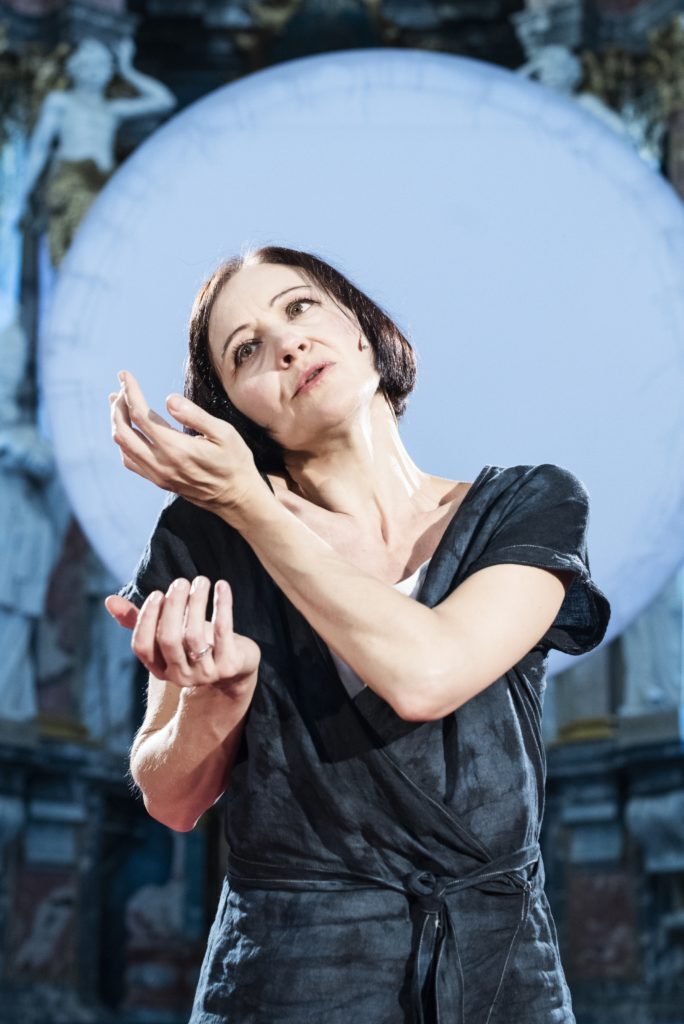One-act performance based on the novel written by JULIE OTSUKA

Scriptwriter and Director – BIRUTE MAR
Choreographer and Assistant to the Director – SIGITA MIKALAUSKAITE
Music Composer and Selector – ANTANAS KUCINSKAS
Stage and Costume Designer – INDRE PACESAITE
Video Designer – KAROLIS BRATKAUSKAS
Performed by BIRUTE MAR
Live music by EGIDIJUS ALISAUSKAS (percussion, gongs, flute and etc.)
Translation to Lithuanian language by EMILIJA FERDMANAITE
…
Duration: 1 hour
The premiere: 11 September, 2019 (Japanese Culture Festival “NowJapan”, Vilnius, Lithuania)
International premiere at Fujaira International Arts festival, UAE (21 February, 2020)
The performance was partially financed by Lithuanian Council for Culture
…
The novel “The Buddha in the Attic” (2011) created by Japanese American contemporary writer Julie Otsuka was very well received as it was awarded with some major American literature prizes. In the novel, the stories of Japanese expatriates who travelled from Tokyo to the United States at the beginning of the 20th century are told: Japanese men went on boats to San Francisco after World War I in order to find a job. As a result, having made enough money, some of them returned to Japan while the others decided to stay and create their own families in America. Looking for a wife, they would send a picture (not necessarily a real one) to Japan and wait for the bride to choose her future husband according to the photography.
The author follows the footsteps of the picture brides: their trip to San Francisco on the boat, meeting with their future husbands, and the failure of their dream about the wonderful life in America. By the end of everyday rituals, the fateful morning dawned in Pearl Harbor: the Japanese living in the United States were massively evicted from their homes and even transported to concentration camps – people vanished as if they have not existed at all, just like the mist disappears in the morning.
“The Buddha in the Attic” is a story about the fate of emigrant women. Not only it uniquely revives the hardships of today’s emigration but it also digs deeper into the occupation of Lithuania as well as Siberian exile when thousands of people were quietly banished from Lithuanian and world map, and the period of holocaust in Europe. It is a sensitive tale about our own roots, seeking for connection to the past and the relation to our ancestors. This is so important in the times of population mixing and for the identity of a nation as a strength and survival.
The director Birute Mar, who adapted the performance, studied the traditional dance and theatre of Nihon Buyo in Tokyo. Birute has published a Japanese diary book “Kokoro” (produced by “Vaga”).
A documentary film about the performance “BUDDHA IN THE ATTIC” with English subtitres (2020)
Birute Mar:
“The short Japanese novel “The Buddha in the Attic” captivated me with its laconic and poetic narration as if it were music. The author reveals the story of her parents and ancestor emigration from the perspective of plural person we. She seems to be endorsed by a chorus of thousands of women – like in a Greek tragedy or a Japanese drama of Noh. That is, the women who have survived the painful lives of people that have been segregated from their roots.”
From Press Reviews
“Birute Mar encapsulated both narrative and poetic literature in the style of Julie Otsuka who embraced short, simple sentences with increasing emotional waves in every part due to the maintained style.”
Dieter Top (“Kultur Forum Europa”, www.kfe.de, Germany, 03.2020)
…
“A memorable performance in the Fujaira International Arts Festival has revealed an unknown topic to many – it is a story about Japanese women coming to the USA to marry Japanese men who were only seen in the photographs and they all had maintained contact with letters in the beginning of the 20th century. The story follows the discrimination and deportation of Japanese women after Pearl Harbor. It is not only the external journey to the unknown land of America but also an inward one: the longing for a better life, fantasies about the chosen dream men. The performance itself speaks about finding the identity and embracing womanhood. It is a contemporary tale which repeats itself all the time. Birute Mar embodies the story by strengthening emotionality. She is subtle and down-to-earth with her gestures, elegance, yet still strong. Birute is the actress blending both traditional and contemporary styles. Her empathy reveals itself through clear and accurate movements; there is nothing unnecessary in her performance.”
Tomasso Chimienti “Teatro negli Emirati: From the sounds to clouds” (“Words in Freedom”, magazine di cultura et societa, Italia, 05.03.2020)
…
“Although the plot structure of the novel and text are maintained in the play, a stage event in the opposite direction parallelly is created: while the Japanese people travel to the USA, the actress with movements, gestures and mis en scene travels to Japan during the performance. Japan becomes the childhood with heroes, roots, the refuge of loved ones. Birute Mar, long known as an ambassador of Japanese theatre and dance in Lithuania (has studied Japanese Noh Theatre singing and dancing, and traditional Nihon Bujo dance in Tokyo). Together with choreographer Sigita Mikalauskaite, Birute carefully selected, discovered and created dance-reminiscent movements and gestures which take us to Japan. It is a metaphor for our homeland where we are safe and loved. The signs of home are displayed as a sculpture of a laughing Buddha on the screen, a mirror representing a reflection to America and placed by a mother, the rituals of the Insect Liberation and Autumn Equinox celebrations, the hand-clapping three times in front of the Buddha statue, the laughter covering the mouth. The opposite directions of the narrated story and the stage process create a special magnetic field of the performance in which a letter written to a mother strikes like a lightning discharge on stage.
The second part of the play is no longer marked by emigration and home nostalgia but by tragedy. It is more physically and rhythmically intense, the emotions here are more open and more “American”: the action story is developed after the events of Pearl Harbor attack when the Japanese were persecuted and deported to concentration camps in America. The stage action increasingly turns into a rite for all the dead, a mourning for them and a prayer for them. Birute Mar has said that she sees this new work and her previous performance “The Children of Ice” in which the story revolves around the Lithuanian exile in Siberia as a diptych. In “The Buddha in the Attic”, the ritual atmosphere is followed by the actress who accompanies the movement with the beat of a gong or drum, the melody of the Japanese flute subtly is followed by Egidijus Alisauskas wearing a dark kimono as an example of Noh Theatre and as the supporting actor.”
Ausra Gudaviciute “The Charm of a Personality Reflections: Several Aspects of Directing Solo Performances” (“Teatro zurnalas”, No 17-18, Lithuania, 2020)
Awards
Best Actress Award at D. Tamuleviciute’s Professional Theatre Festival (Lithuania, 2019)
Best Performance Award at Professional Theatre Festival “ART DO” (Lithuania, 2020)
Festivals, Tours
International Theatre Festival “Druskininkai Summer Theatre Crossing” (Lithuania, 2019)
Japanese Culture Festival “NowJapan” (Vilnius, Lithuania, 2019)
D. Tamuleviciute’s Professional Theatre Festival (Varena, Lithuania, 2019)
International Solo Performance Festival “Atspindys” (Visaginas, Lithuania, 2019)
Fujaira International Arts Festival – International premiere (Fujaira, UAE, 2020)
International Chaimas Frenkelis Villa Summer Festival (Siauliai, Lithuania, 2020)
International Chamber Theatre Festival “MIZANscena” (Seduva, Lithuania, 2020)
Lithuanian Professional Theatre Festival “ART DO” (Kupiskis, Lithuania, 2020)
International Theatre festival “Theatrium” (“LIthuanian showcase” programe, Klaipeda, Lithuania, 2024)
